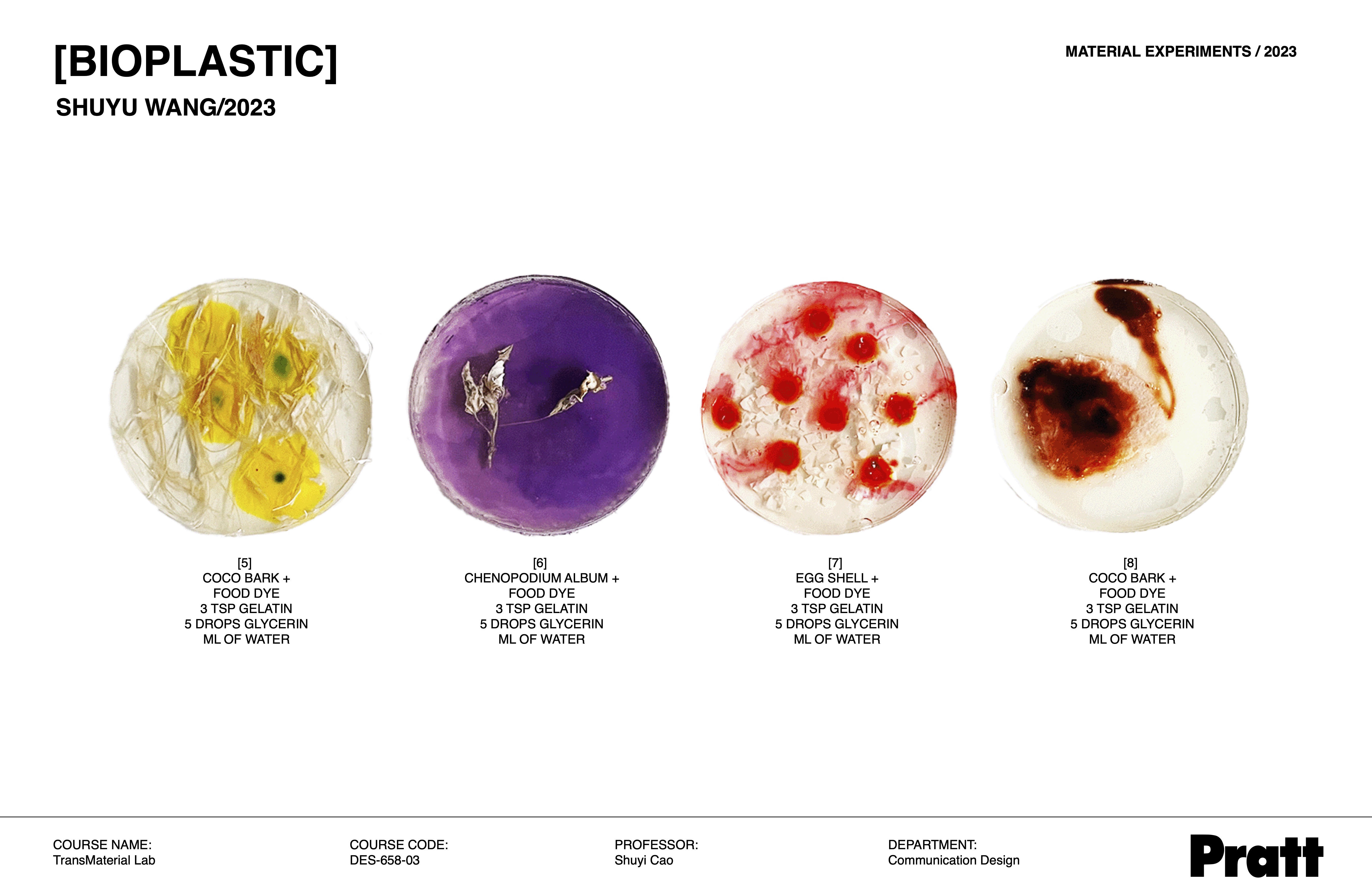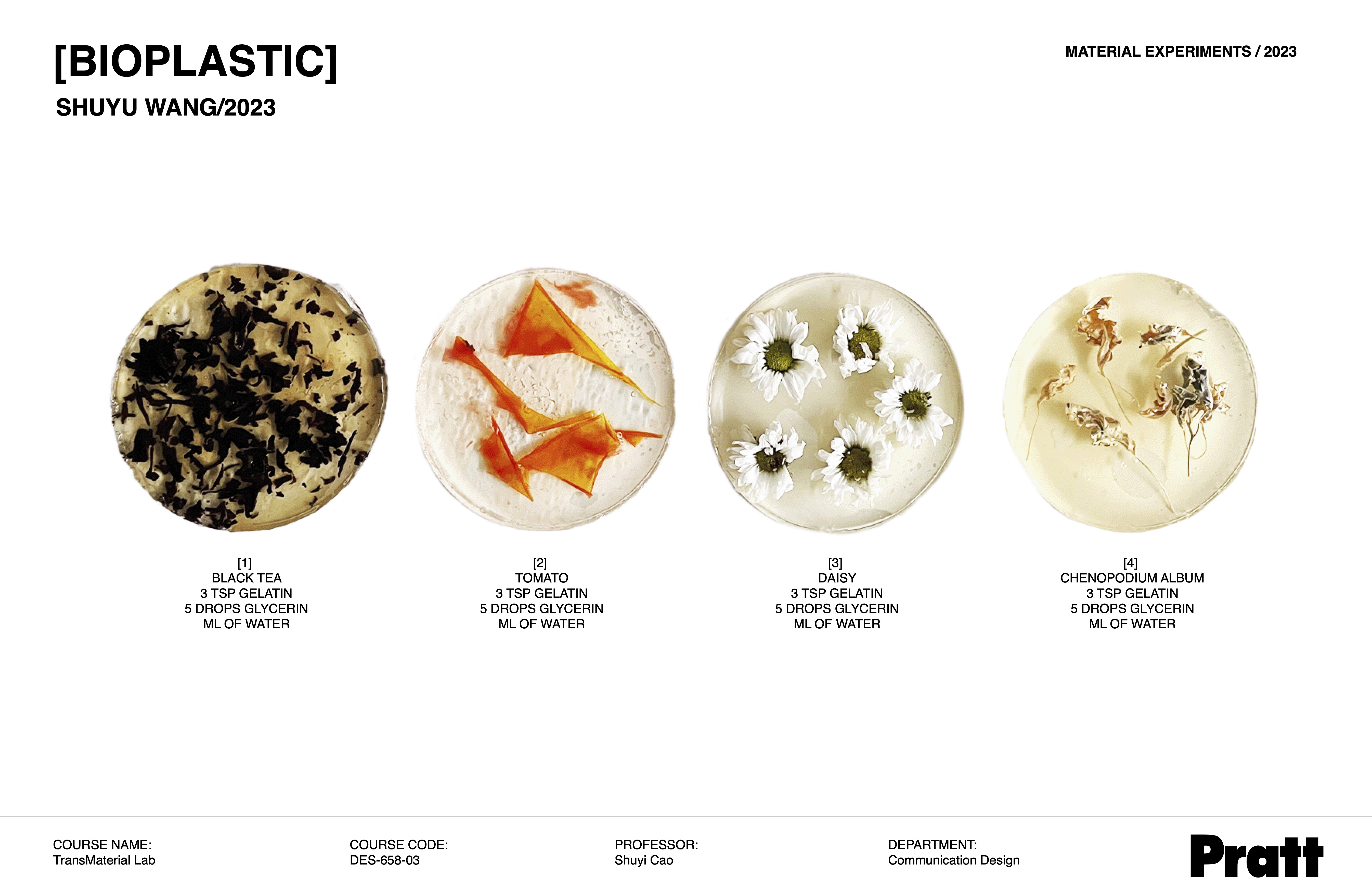
Shuyu Wang
Materials: Mycelium, Bioplastic
Ingredients: Granulated cork, recycled paper, fiber paper, coffee grounds, orange pepper, cabbage, tea bags, black tea, tomato skin, daisy, Chenopodium album, coco bark, eggshell, hand soap, gelatin powder, water, glycerin
Processes: Boiling, pasteurization,inoculation, casting, sanitization etc.
Tools: Measuring cup,container, teaspoon, pots, disposable gloves, petri dish etc.
Timeline: 4 weeks
Materials: Mycelium, Bioplastic
Ingredients: Granulated cork, recycled paper, fiber paper, coffee grounds, orange pepper, cabbage, tea bags, black tea, tomato skin, daisy, Chenopodium album, coco bark, eggshell, hand soap, gelatin powder, water, glycerin
Processes: Boiling, pasteurization,inoculation, casting, sanitization etc.
Tools: Measuring cup,container, teaspoon, pots, disposable gloves, petri dish etc.
Timeline: 4 weeks
In my mycelium and bioplastic experiment, I discovered intriguing insights. Contrary to my assumption that mycelium would consume any food, it thrived on fiber paper over soybean dregs. This revealed that the initial spacing between the mycelium and its "food" significantly influenced its growth shape, leading to unexpected structures. Additionally, observing the beautiful mold patterns of mycelium under a microscope was fascinating. In creating bioplastics, incorporating various food wastes added stunning colors. However, the proportion of materials and humidity levels during drying were crucial, as many samples developed mold, presenting challenges but also yielding aesthetically pleasing, twisted forms.




